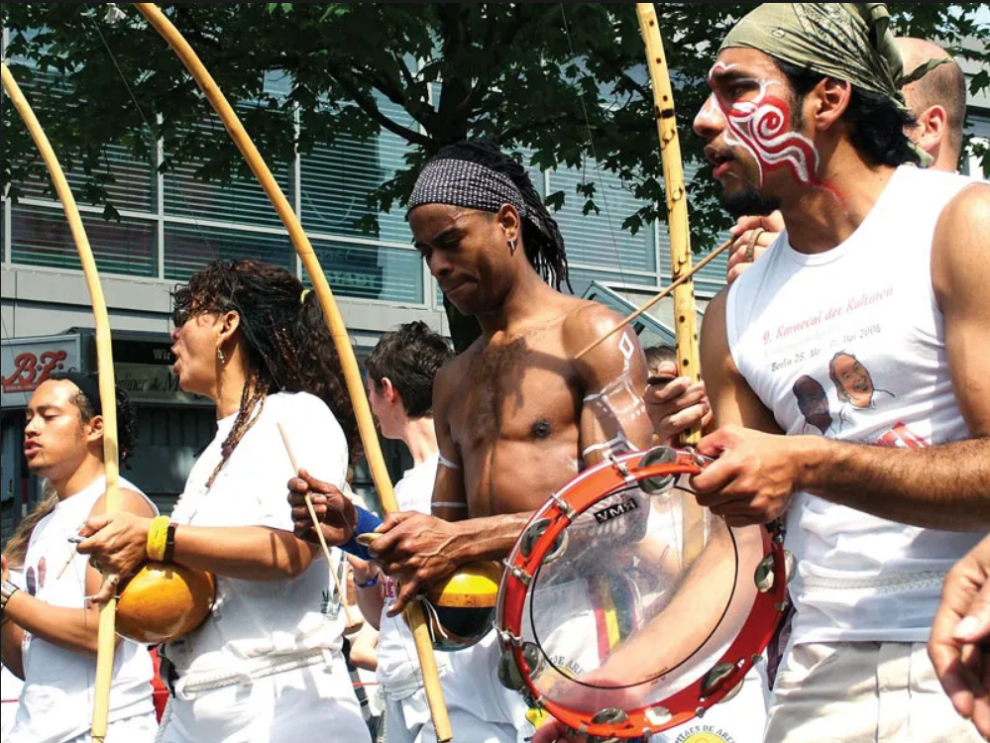Capoeira is more than just a martial art; it is a cultural phenomenon, a form of resistance, and a vibrant expression of African heritage in Brazil. Emerging from the plantations of colonial Bahia, this dynamic practice fuses combat techniques, acrobatics, music, and dance into a singularly Brazilian art form. Its story, steeped in struggle and creativity, speaks to the resilience of enslaved Africans and their ability to carve out a cultural identity under the harshest conditions. Today, capoeira is celebrated worldwide, but its roots remain firmly planted in Bahia’s soil.
Origins in the Shadow of Slavery
The history of capoeira begins with the transatlantic slave trade. Between the 16th and 19th centuries, millions of Africans were forcibly brought to Brazil by Portuguese colonists to labour on sugarcane plantations. A significant number of these enslaved individuals came from West Africa, particularly Angola and the Congo, regions rich in martial traditions and expressive dance forms. It was in Bahia, where the African population was especially concentrated, that capoeira began to take shape.

Capoeira’s early development remains shrouded in mystery due to the lack of written records from the enslaved. However, historians agree that it originated as a form of resistance. Enslaved Africans blended their combat techniques with music and dance, disguising their training as a playful activity to avoid punishment from overseers. This ingenuity allowed them to prepare for self-defence and potential escape while maintaining a semblance of cultural continuity in a foreign and oppressive land.
The Art of Deception
One of capoeira’s defining features is its element of trickery. Players feign weakness, misdirect their opponents, and execute unexpected attacks with a fluidity that mimics dance. This emphasis on deception likely stems from its origins as a clandestine practice. By embedding martial techniques within rhythmic movements, capoeira practitioners, or capoeiristas, could mask their intentions and pass off their training as harmless entertainment.
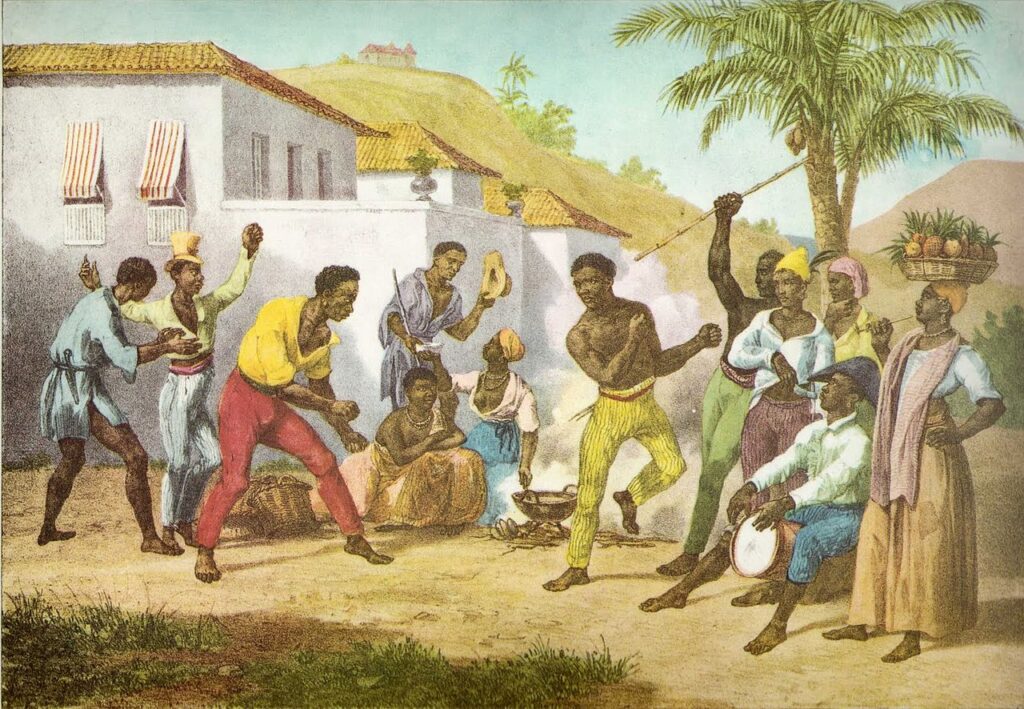
The ginga, a swaying base movement, exemplifies this strategy. While seemingly simple, it serves multiple purposes: it keeps the practitioner in constant motion, creates opportunities for attack or defence, and adds an aesthetic quality that distinguishes capoeira from other martial arts. Combined with cartwheels, handstands, and spinning kicks, the ginga showcases capoeira’s unique blend of athleticism and strategy.
The Role of Music
Capoeira is as much about sound as it is about movement. Its performances are accompanied by a distinct musical ensemble, led by the berimbau, a single-string instrument that sets the rhythm and tone of the game. Other instruments, including the pandeiro (tambourine), atabaque (drum), and agogô (double bell), contribute to the rich soundscape.
Songs, often sung in Portuguese, play a crucial role in capoeira’s practice. These lyrics narrate historical events, celebrate legendary capoeiristas, or convey messages to players in the roda (circle) where capoeira is performed. The call-and-response structure of these songs fosters a sense of community and connection among participants.
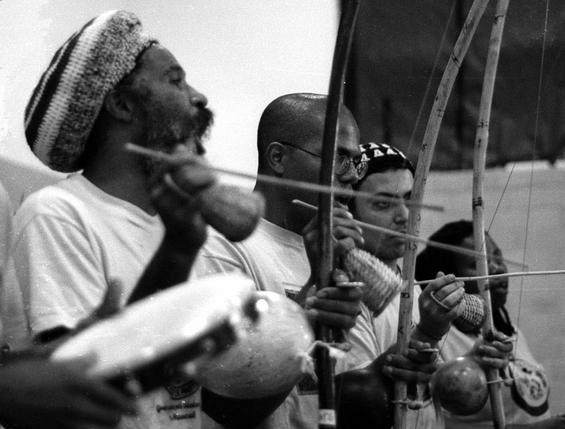
The roda itself is a central feature of capoeira. Players enter the circle, surrounded by fellow practitioners and musicians, to engage in a game, or jogo. The interaction is not strictly competitive; instead, it is a dialogue of movements, with each player testing the other’s skill, creativity, and wit.
From the Streets to Suppression
As slavery was abolished in 1888, freed Africans faced marginalisation and poverty. For many, capoeira became a means of survival, offering a sense of identity and a method of self-defence in a hostile society. However, its association with marginalised communities, particularly urban gangs, led to its criminalisation in the late 19th century. Under Brazil’s Penal Code of 1890, practising capoeira was punishable by imprisonment.
Despite these restrictions, capoeira persisted underground. Practitioners used coded names, or apelidos, to conceal their identities and passed on their knowledge orally to evade detection. It was during this period of suppression that capoeira developed its enduring reputation as a symbol of resistance and resilience.
The Rise of Mestre Bimba and Mestre Pastinha
In the early 20th century, capoeira underwent a renaissance thanks to the efforts of two legendary figures: Mestre Bimba and Mestre Pastinha. Each played a pivotal role in shaping the art form and securing its recognition as a legitimate cultural practice.
Mestre Bimba, born Manoel dos Reis Machado in 1899, created a style known as capoeira regional. Seeking to elevate capoeira’s reputation, Bimba incorporated elements of other martial arts and formalised its training into a structured curriculum. In 1932, he opened the first capoeira academy in Salvador, Bahia, marking a turning point in its acceptance by Brazilian society.
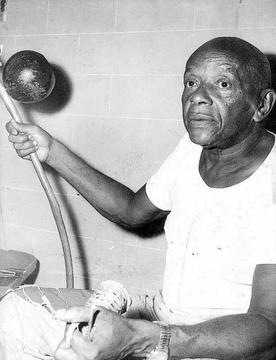
Mestre Pastinha, on the other hand, championed capoeira angola, a style that emphasises its traditional roots. His teachings celebrated the art’s African heritage, focusing on its slower, more improvisational movements. Through his academy, Pastinha ensured that capoeira’s historical and cultural significance would not be overshadowed by modern adaptations.
Recognition and Global Spread
The mid-20th century saw capoeira emerge from the shadows. In 1937, Mestre Bimba performed for Brazilian President Getúlio Vargas, who declared capoeira a national sport. This recognition helped lift its stigma, and capoeira began to flourish openly. The establishment of formal schools and the inclusion of capoeira in cultural festivals further solidified its status as an emblem of Brazilian identity.
In the decades that followed, capoeira spread beyond Brazil’s borders. Brazilian migrants and capoeiristas introduced the art to Europe, North America, and Africa, where it gained a global following. Today, capoeira is practised in over 150 countries, with each community contributing its unique interpretations and adaptations.
Capoeira as a Living Heritage
In 2014, UNESCO recognised capoeira as an Intangible Cultural Heritage of Humanity, affirming its value as a cultural treasure. This designation underscores its significance as a living tradition, one that continues to evolve while maintaining its connection to its African roots.
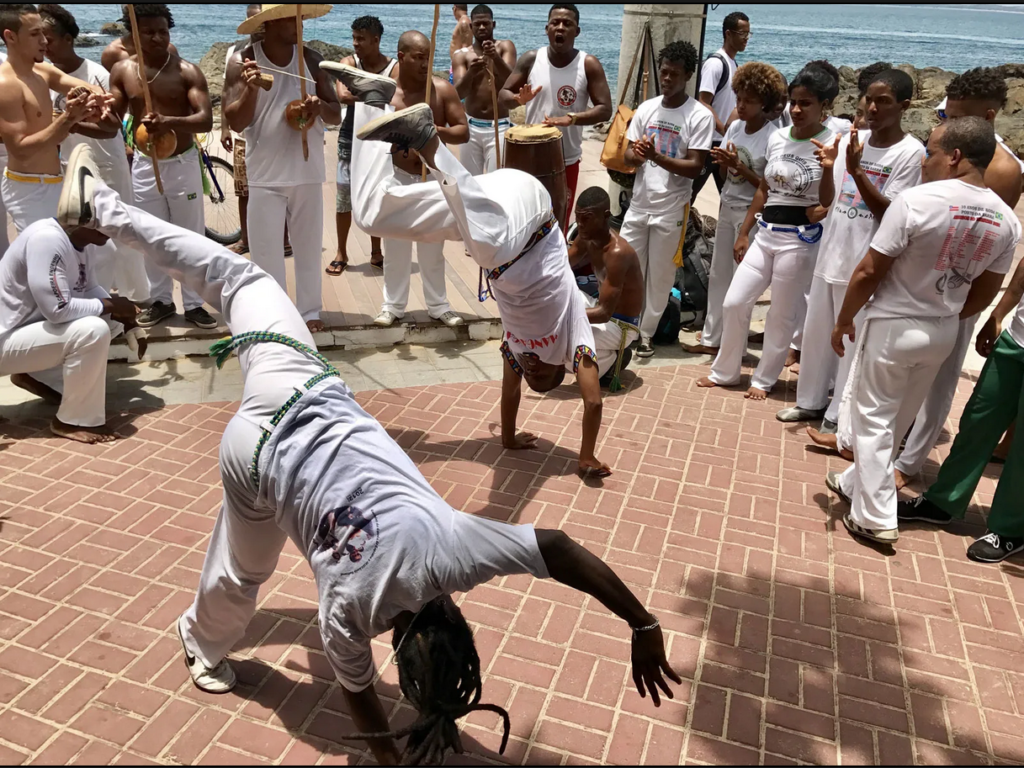
Contemporary capoeira serves multiple purposes. It is a martial art, a form of physical fitness, a cultural education tool, and a means of community building. Schools and academies around the world teach not only the movements but also the music, history, and philosophy of capoeira, ensuring that its legacy endures.
A Testament to Resilience
Capoeira’s journey from the plantations of Bahia to the global stage is a testament to the resilience and creativity of its practitioners. Born out of oppression, it has become a symbol of freedom and cultural pride, embodying the strength of African heritage in Brazil.
Whether performed in the streets of Salvador or a studio in Tokyo, capoeira remains a dialogue between past and present, a reminder of the struggles that shaped it and the vibrancy that sustains it. Its history, marked by both adversity and triumph, makes it a powerful expression of the human spirit.

